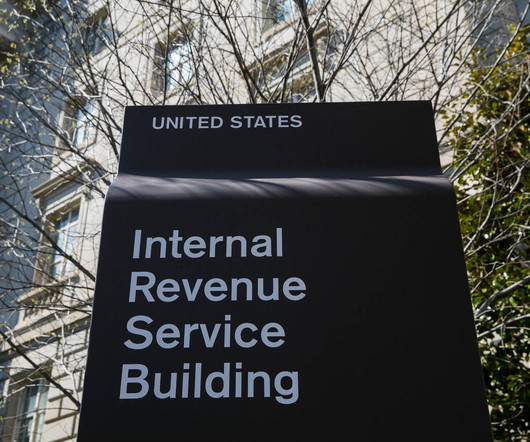A guide to Making Tax Digital for Income Tax Self Assessment
Wellers Accounting
JULY 29, 2025
Making Tax Digital for Income Tax Self Assessment is being rolled out in phases, here is a guide of what you need to know and action.
This site uses cookies to improve your experience. To help us insure we adhere to various privacy regulations, please select your country/region of residence. If you do not select a country, we will assume you are from the United States. Select your Cookie Settings or view our Privacy Policy and Terms of Use.
Cookies and similar technologies are used on this website for proper function of the website, for tracking performance analytics and for marketing purposes. We and some of our third-party providers may use cookie data for various purposes. Please review the cookie settings below and choose your preference.
Used for the proper function of the website
Used for monitoring website traffic and interactions
Cookies and similar technologies are used on this website for proper function of the website, for tracking performance analytics and for marketing purposes. We and some of our third-party providers may use cookie data for various purposes. Please review the cookie settings below and choose your preference.
 income tax Related Topics
income tax Related Topics 
Wellers Accounting
JULY 29, 2025
Making Tax Digital for Income Tax Self Assessment is being rolled out in phases, here is a guide of what you need to know and action.

RogerRossmeisl
DECEMBER 29, 2024
A larger standard deduction will shelter more income from federal income tax next year. The IRS recently announced next years inflation-adjusted amounts for several provisions. Here are the highlights. Standard deduction. What does an increased standard deduction mean for you?
This site is protected by reCAPTCHA and the Google Privacy Policy and Terms of Service apply.
AI In Accounting: A Practical Roadmap For Smarter AP
How to Streamline Payment Applications & Lien Waivers Through Innovative Construction Technology
Why Tech-Forward Tax and Accounting Firms Have the Inside Track to the Future
Stop Budget Burnout: A Better Way to Grow Your Nonprofit in 2026

RogerRossmeisl
DECEMBER 29, 2024
These qualified charitable distributions (QCDs) may help you gain tax advantages. QCD basics QCDs can be made from your traditional IRA(s) free of federal income tax. If youve reached age 70, you can make cash donations directly from your IRA to IRS-approved charities.
AI In Accounting: A Practical Roadmap For Smarter AP
How to Streamline Payment Applications & Lien Waivers Through Innovative Construction Technology
Why Tech-Forward Tax and Accounting Firms Have the Inside Track to the Future
Stop Budget Burnout: A Better Way to Grow Your Nonprofit in 2026

MyIRSRelief
NOVEMBER 1, 2024
However, they must pay themselves a reasonable salary, which is subject to payroll taxes. What are the Tax Preparation Requirements for an S Corporation? Income Tax Return for an S Corporation, annually. This form reports the corporation’s income, deductions, and credits.

RogerRossmeisl
APRIL 27, 2025
For federal income tax purposes, losses from personal loans are classified as short-term capital losses. Get it in writing You want to be able to prove that you intended for the transaction to be a loan rather than an outright gift. You can use the losses to first offset short-term capital gains that.

RogerRossmeisl
JULY 6, 2025
As the use of digital assets like cryptocurrencies continues to grow, so does the IRS’s scrutiny of how taxpayers report these transactions on their federal income tax returns. To help you stay compliant and avoid tax-related complications, here are the basics of digital asset reporting.

CPA Practice
AUGUST 6, 2025
William Arthur Clawson—who defrauded clients by using their cash payments, which were intended to pay their income taxes, for his own personal expenses—was given a 24-month prison sentence on July 31.

ThomsonReuters
DECEMBER 4, 2024
Filing individual income tax returns can be a complex process, but with the right workflow, professional tax preparers and accounting firms can streamline the experience for both clients and staff. Harnessing technology for individual income tax return filing can transform the efficiency of accounting firms.

Accounting Today
JULY 22, 2025
House Republicans released a spending proposal that threatens to withhold funding from the Financial Accounting Standards Board unless it withdraws its income tax reporting standard.

Accounting Insight
MAY 8, 2025
Get your accounting practice Making Tax Digital for Income Tax ready with our comprehensive checklist. The MTD checklist includes: What MTD for Income Tax is and what it means for accountants. The MTD checklist includes: What MTD for Income Tax is and what it means for accountants.

CPA Practice
NOVEMBER 26, 2024
Notice 2024-85 , which was issued earlier today by the IRS, also announces that for calendar-year 2024, the IRS won’t assert penalties under section 6651 or 6656 for a TPSO’s failure to withhold and pay backup withholding tax during the calendar year.

Withum
JULY 4, 2025
One Big Beautiful Bill Tax Provisions The One Big Beautiful Bill includes the following significant federal income tax provisions. The Senate bill adds an additional $1 trillion more than the original House bill proposed.

RogerRossmeisl
MARCH 23, 2025
If an individual taxpayer has substantial business losses, unfavorable federal income tax rules can potentially come into play. Heres what you need to know as you assess your 2024 tax situation. First, the passive activity loss (PAL) rules may apply if you arent very involved in the business or if its a rental activity.

CPA Practice
OCTOBER 29, 2024
The IRS noted that these groups aren’t subject to the corporate income tax, but instead income is “passed through” onto the income tax returns of the individual or corporate owners and taxed at their income tax rates.

CPA Practice
JULY 29, 2025
Read the FAQs Subscribe for free to get personalized daily content, newsletters, continuing education, podcasts, whitepapers and more.

RogerRossmeisl
AUGUST 13, 2025
The alternative minimum tax (AMT) is a separate federal income tax system that bears some resemblance to the regular federal income tax system. The difference is that the individual AMT system taxes certain types of income that are tax-free under the regular system.

CPA Practice
NOVEMBER 6, 2024
He also prepared tax returns for clients with deductions he knew to be false. On his own income tax filings, according to court records, he also underreported his commission income from the scheme by $400,000.

inDinero Tax Tips
OCTOBER 22, 2024
LLC Taxes in Nevada Here are the primary reasons Nevada is an attractive place to start a business: While the average American pays 8.9% in state income tax, Nevada is one of a handful of states that doesn’t have personal income tax. That said, the state isn’t tax-free.

CPA Practice
JULY 24, 2025
Read the FAQs Subscribe for free to get personalized daily content, newsletters, continuing education, podcasts, whitepapers and more.

Accounting Web
JUNE 30, 2025
Personal tax Tags Income tax Making tax digital Outsourcing

ThomsonReuters
OCTOBER 24, 2024
Review draft of sales agreement for compliance with the tax rules. Analyze income tax consequences. Consider estate tax consequences. Determine if the installment sale is advisable under the circumstances. If applicable, elect out of installment sale treatment.

Withum
NOVEMBER 25, 2024
Individual Income Tax Rates TCJA lowered the individual income tax rates and if TCJA expires the rates are set to go from 10%, 12%, 22%, 24%, 32%, 35%, and 37% to 10%, 15%, 25%, 28%, 33%, 35% and 39.6%. Notably, the top individual income tax rate will increase from 37% to 39.6%.

Anders CPA
DECEMBER 24, 2024
You can reference this economic nexus by state chart for the most up-to-date information regarding economic nexus thresholds for sales and use tax. Economic nexus for income tax purposes is limited by P.L. Each state has its requirements for what creates nexus. This is called having an economic presence.

Accounting Web
AUGUST 13, 2025
HMRC & policy Tags Income tax Making tax digital Sole practitioner

TaxConnex
JANUARY 2, 2025
Lawmakers in Louisiana, however, opted to give their state one of the highest combined sales taxes in the nation by passing simultaneous tax cuts on personal and corporate income tax and hiking the states sales tax to 5% (at least for the rest of this decade).

Going Concern
NOVEMBER 8, 2024
Tax Steps companies should take now to prepare for major tax legislation in 2025 [ EY ] Whether you call it the “Super Bowl of Tax” or “Taxmageddon,” one thing is clear: Congress is all but certain to consider major tax legislation in 2025. appeared first on Going Concern.

Accounting Today
AUGUST 6, 2025
Bloomberg Tax and Accounting launched an embedded solution to help users adhere to the FASB Accounting Standards Update that concerns income tax disclosures.

CPA Practice
JUNE 26, 2025
Search for: Home About Us Log In Subscribe for Free My Account Log Out Accounting & Auditing Accounting ESG Financial Reporting Nonprofit Small Business Auditing Audit Standards PCAOB SEC Tax Taxes Income Tax IRS Legislation Sales Tax State Local Taxes Tax Planning Payroll Payroll Benefits Human Resources Payroll Software Payroll Taxes Tech Technology (..)

CPA Practice
JUNE 25, 2025
Search for: Home About Us Log In Subscribe for Free My Account Log Out Accounting & Auditing Accounting ESG Financial Reporting Nonprofit Small Business Auditing Audit Standards PCAOB SEC Tax Taxes Income Tax IRS Legislation Sales Tax State Local Taxes Tax Planning Payroll Payroll Benefits Human Resources Payroll Software Payroll Taxes Tech Technology (..)

Withum
JUNE 23, 2025
Pennsylvania has embarked on a significant tax reform journey by reducing its corporate net income tax (“CNIT”) rate. This reduction is part of a broader strategy to make Pennsylvania a more attractive destination for businesses, including law firms, by easing the tax burden and fostering a more competitive business environment.

CPA Practice
JUNE 5, 2025
Search for: Home About Us Log In Subscribe for Free My Account Log Out Accounting & Auditing Accounting ESG Financial Reporting Nonprofit Small Business Auditing Audit Standards PCAOB SEC Tax Taxes Income Tax IRS Legislation Sales Tax State Local Taxes Tax Planning Payroll Payroll Benefits Human Resources Payroll Software Payroll Taxes Tech Technology (..)

Withum
MAY 12, 2025
Millionaires tax: The budget extends the higher personal income tax rate on individuals who make over $1.1 When first enacted in 2021, this higher tax rate for millionaires was set to expire in 2027. However, like most temporary tax hikes, it looks to be permanent. million annually through 2032.

CPA Practice
JULY 15, 2025
Search for: Home About Us Log In Subscribe for Free My Account Log Out Accounting & Auditing Accounting ESG Financial Reporting Nonprofit Small Business Auditing Audit Standards PCAOB SEC Tax Taxes Income Tax IRS Legislation Sales Tax State Local Taxes Tax Planning Payroll Payroll Benefits Human Resources Payroll Software Payroll Taxes Tech Technology (..)

CTP
JUNE 9, 2025
Practicing Scenario Modeling With so many tax provisions up in the air this year, planning ahead can feel like an impossible task. To accelerate income, we might look at a Roth conversion or execute some trades to pull income into this year when income tax rates are lower.

CPA Practice
JULY 15, 2025
Search for: Home About Us Log In Subscribe for Free My Account Log Out Accounting & Auditing Accounting ESG Financial Reporting Nonprofit Small Business Auditing Audit Standards PCAOB SEC Tax Taxes Income Tax IRS Legislation Sales Tax State Local Taxes Tax Planning Payroll Payroll Benefits Human Resources Payroll Software Payroll Taxes Tech Technology (..)

CPA Practice
MAY 21, 2025
Sirleaf, 65, of Darby, PA, pleaded guilty to 15 counts of aiding and assisting in the preparation of false income tax returns and three counts of filing false personal income tax returns for himself.

TaxConnex
AUGUST 5, 2025
Tech Myth: I don’t have nexus, so as a telecom provider I don’t need to collect and remit any taxes. Generally, nexus needs to be established before a company must adhere to a jurisdiction’s sales tax rules.

ThomsonReuters
JUNE 18, 2025
Now, the cap restricts the total deduction to $10,000, irrespective of the actual taxes paid. How the SALT cap affects state budgets The cap, which limits the amount of state and local taxes that can be deducted from federal income taxes, has far-reaching consequences.

TaxConnex
OCTOBER 15, 2024
Income tax often seems to grab most of the headlines, but sales tax can make for a hefty crime – and punishment – too. A famous case recently examined in the TaxConnex podcast It Depends episode, “Sales Tax Crimes - Pt.

CPA Practice
DECEMBER 3, 2024
27)—A tax preparer who admitted to filing more than $3 million in fraudulent tax returns on behalf of her clients is facing up to 30 years in prison for her crime. As a result, the UA’s return claimed a fraudulent federal income tax refund of $12,359. (TNS) ATHENS, GA (Nov. District Judge Tilman E. Tripp” Self III.

Accounting Insight
MAY 21, 2025
Almost half of UK sole traders at risk of non-compliance, feeling unprepared for income tax changes due April 2026. million businesses* – say they feel unprepared for upcoming tax reporting changes, putting them at risk of non-compliance. Nearly half (45%) of UK sole traders – representing approximately 1.4

Xero
JUNE 6, 2025
These changes to income tax rates and thresholds will also be automatically applied in pay runs with a payment date of 1 July 2025. Any employees with a superannuation line set up with a rate type of statutory rate will be automatically updated.

CPA Practice
JUNE 6, 2025
Search for: Home About Us Log In Subscribe for Free My Account Log Out Accounting & Auditing Accounting ESG Financial Reporting Nonprofit Small Business Auditing Audit Standards PCAOB SEC Tax Taxes Income Tax IRS Legislation Sales Tax State Local Taxes Tax Planning Payroll Payroll Benefits Human Resources Payroll Software Payroll Taxes Tech Technology (..)

CPA Practice
JUNE 30, 2025
million – $4,999,999 $5 million – $10,000,000 Over $10 million Consent Policy (Required) By downloading this content, you agree to our Terms and Conditions.
Expert insights. Personalized for you.
We have resent the email to
Are you sure you want to cancel your subscriptions?

Let's personalize your content